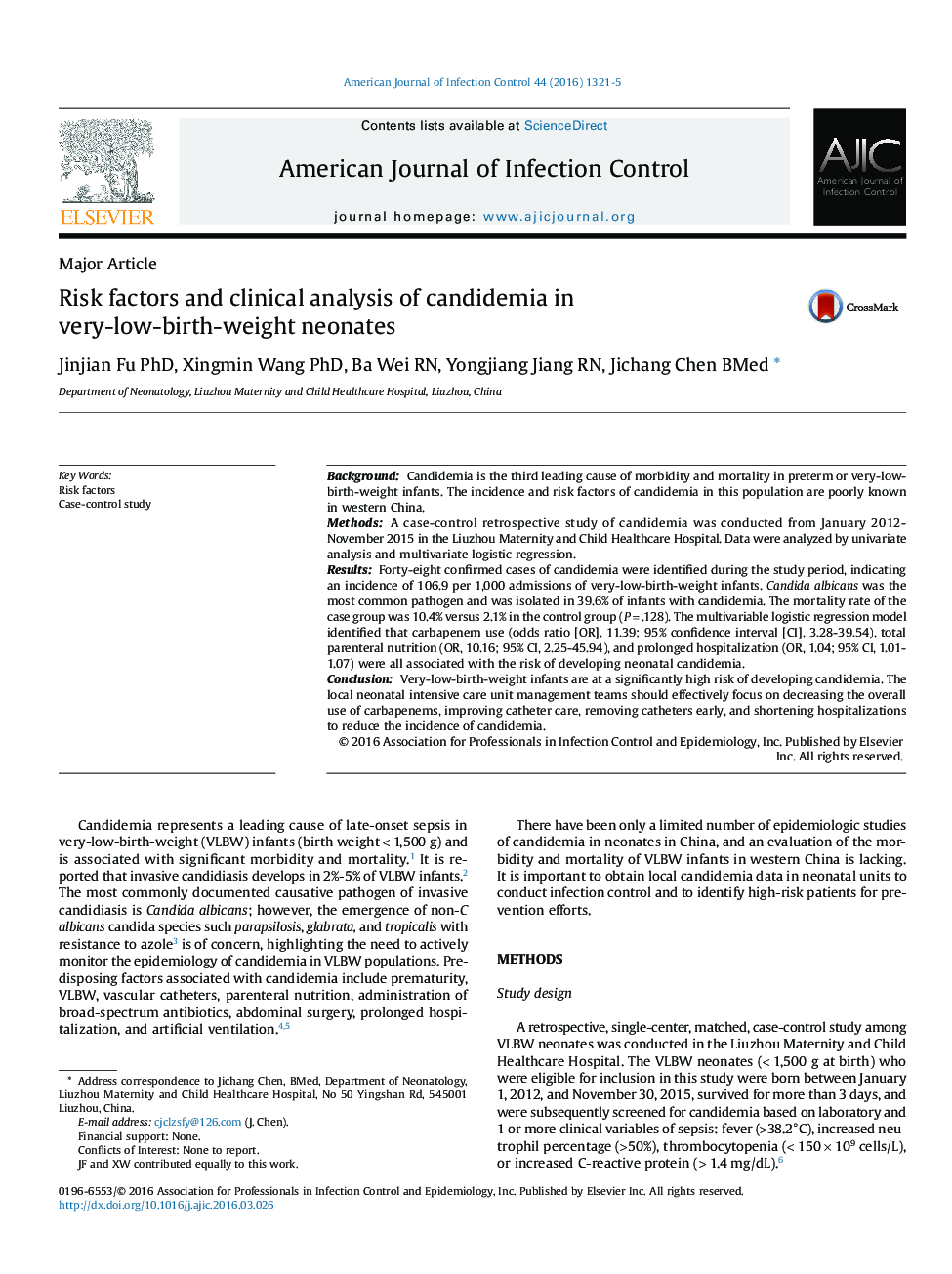| Article ID | Journal | Published Year | Pages | File Type |
|---|---|---|---|---|
| 5566599 | American Journal of Infection Control | 2016 | 5 Pages |
â¢Incidence and risk factors for candidemia in very low birth weight (VLBW) infants are poorly known in western China.â¢Our results indicate that very low birth weight infants are at significantly high risk of development of candidemia.â¢Use of carbapenems, total parenteral nutrition and prolonged hospitalization were all associated with the risk of development of neonatal candidemia.â¢The mortality rate of candidemia in VLBW infants was 10.4% during the 4-year period.
BackgroundCandidemia is the third leading cause of morbidity and mortality in preterm or very-low-birth-weight infants. The incidence and risk factors of candidemia in this population are poorly known in western China.MethodsA case-control retrospective study of candidemia was conducted from January 2012-November 2015 in the Liuzhou Maternity and Child Healthcare Hospital. Data were analyzed by univariate analysis and multivariate logistic regression.ResultsForty-eight confirmed cases of candidemia were identified during the study period, indicating an incidence of 106.9 per 1,000 admissions of very-low-birth-weight infants. Candida albicans was the most common pathogen and was isolated in 39.6% of infants with candidemia. The mortality rate of the case group was 10.4% versus 2.1% in the control group (Pâ=â.128). The multivariable logistic regression model identified that carbapenem use (odds ratio [OR], 11.39; 95% confidence interval [CI], 3.28-39.54), total parenteral nutrition (OR, 10.16; 95% CI, 2.25-45.94), and prolonged hospitalization (OR, 1.04; 95% CI, 1.01-1.07) were all associated with the risk of developing neonatal candidemia.ConclusionVery-low-birth-weight infants are at a significantly high risk of developing candidemia. The local neonatal intensive care unit management teams should effectively focus on decreasing the overall use of carbapenems, improving catheter care, removing catheters early, and shortening hospitalizations to reduce the incidence of candidemia.
